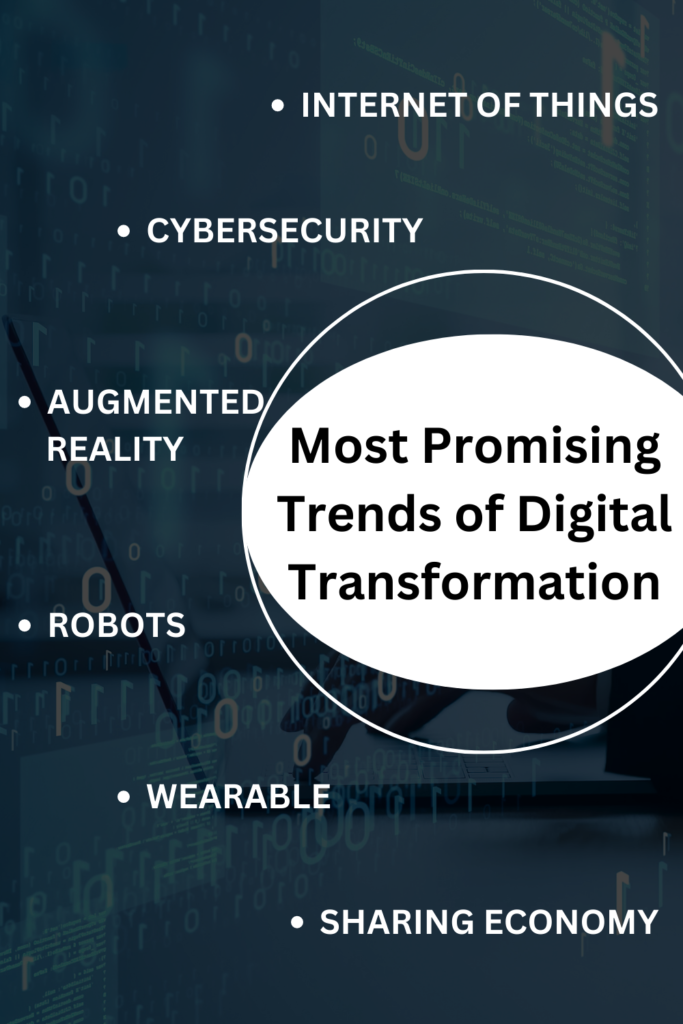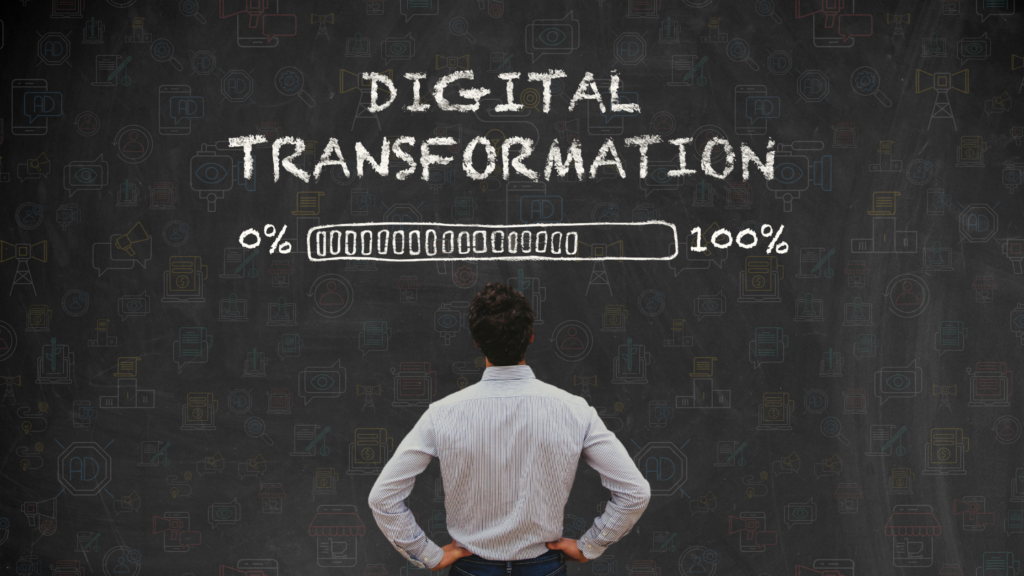The process of altering a business’s operations, from its processes to its products, is known as Digital Transformation. Culture and human behaviours are also influential, in addition to technology. In 2022, we’ll see many new technologies to help companies manage their Digital Transformations more efficiently and effectively than ever before.
Tackling the digital transformation of your business is important. It can help you improve customer experience, boost sales and generate profits.
However, it’s not easy. In such situations, we help your business by taking care of all the aspects such as technology strategy and roadmap development, complexity analysis, cloud IaaS solutions, etc., so that you don’t have to worry about anything.
Table of Contents
Here are Some of the Most Promising Trends in Digital Transformation
1. The Hard-To-Fathom Future of IoT is Here
IoT is a concept that has been around for decades, but it’s only recently that we have begun to see its full potential. As more and more devices connect to the Internet, IoT is starting to impact our lives in ways we never could have imagined.
The first thing you need to know about IoT is that it’s already here—and it’s growing fast! In fact, according to some estimates from Gartner Research, there will be nearly 20 billion connected devices by 2022 (that’s up from 12 billion today).
By then nearly one-third of all households will have at least one smart appliance or sensor in their home; these numbers don’t even include wearables such as fitness trackers or smartwatches which also connect wirelessly via Bluetooth low-energy technology.*
2. Cybersecurity Threats are on The Rise
Cybersecurity threats are on the rise in the era of Digital Transformation. Cybercrime is a growing threat to businesses, consumers, and governments. In fact, according to an IBM study conducted in 2018 with over 100,000 respondents across 21 countries around the world:
- 90% of companies reported being hit by cyberattacks within the past 12 months;
- 74% experienced data breaches;
- 48% had malware or virus infections that caused significant damage to their business operations;
- 33% were compromised due to weak passwords;
In addition to these statistics from IBM’s 2018 Global Security Report (GSR), there are also other factors that make cybersecurity an important issue for organizations today such as:
3. Augmented Reality Got Real
A technique known as Augmented Reality adds computer-generated data to the physical world. In other words, it combines real-world objects with computer-generated images and data to create an interaction between the two.
AR has been around for years, but it’s only recently become mainstream in industries like retail and healthcare. The most common use cases include:
- Industry 4.0 – Industrial enterprises are increasingly turning to cognitive technologies to help them operate more efficiently and intelligently
- Retail – Applications like Amazon Go allow customers to simply walk out of stores without having any checkout lines or cashiers, so you can grab what you need on your way out! This means less time spent waiting for things like milk or bread (and hopefully less money spent buying those things). If this sounds appealing then maybe we should start saving up some pennies because there will be no limit on how much stuff we can buy from now onwards…

4. The Sharing Economy is Growing Up and Scaling Out
“The sharing economy is growing up and scaling out“
As cities become more crowded and expensive, people are looking for ways to save money on transportation, housing, and food. That’s where the sharing economy comes in—a new way of helping people get around without spending too much money or wasting time on their own transportation needs.
The sharing economy allows individuals who can’t afford cars or who don’t want them (elderly people with mobility issues) to access what they need using services such as carpooling apps like UberPOOL which connect drivers who want to share rides with passengers heading in similar directions.”
5. Wearables May Not Be the Consumer Rage We Anticipated But They’re Already Transforming Some Industries
Wearables are already being used in some industries. For example, wearables are used in customer-facing roles such as retail sales associates or doctors’ offices. In the future, we will see these devices become more prevalent in these types of roles because they are easier to use and more efficient than computers or smartphones for certain tasks.
6. Robots—Both Full- and Partial-Body—Will Become More Common in Customer-Facing Roles and Physical Labour
There are two types of robots: full-body, which can perform tasks such as operating machinery or lifting heavy objects; and partial-body, which is similar to a human arm. The latter can be used in customer-facing roles to help with virtual interactions with customers or clients.
Full-body robots will be more common than partial-bodies because they’re cheaper and easier to maintain. Full-body robots are also better able to perform multiple tasks simultaneously (such as working on an assembly line).
Partial bodies can only do one task at a time but have advantages in areas like low cost, ease of use, and customization capabilities making them best suited for jobs requiring repetitive motions that don’t require high dexterity like cooking food prep work according to research conducted by MIT Technology Review magazine.
Digital Transformation Technology Trends in 2022 Will Have Major Impacts on Businesses Worldwide
Digital Transformation is the process of transforming an organization from one that operates in a traditional way to one that operates using technology. It is also referred to as digital disruption or digital innovation. This shift can be seen across industries, as well as within individual companies and organizations.
Digital Transformation has been ongoing for decades, but its impact has been felt most heavily over the past few years due to rapid technological advances like artificial intelligence (AI), machine learning, and deep learning technologies like neural networks and deep neural networks (DNNs).
These advancements have enabled us to create more advanced algorithms than ever before—and they’re getting better every day!
Conclusion
While we might not know how, or when, Digital Transformation technology is going to change our lives, it’s clear that it’s here to stay.
From the rise of cybersecurity threats and shared economy jobs to augmented reality devices and wearables that can transform industries from manufacturing to customer service, 2022 will be an exciting year for those working in business today.
As technology continues its rapid development cycle—with new advancements coming every day—it will be difficult for any business not already embracing this paradigm shift in order for their organization to survive long term



 Like
Like LOVE
LOVE Win
Win Cute
Cute LOL
LOL OMG
OMG WTF
WTF Fail
Fail


